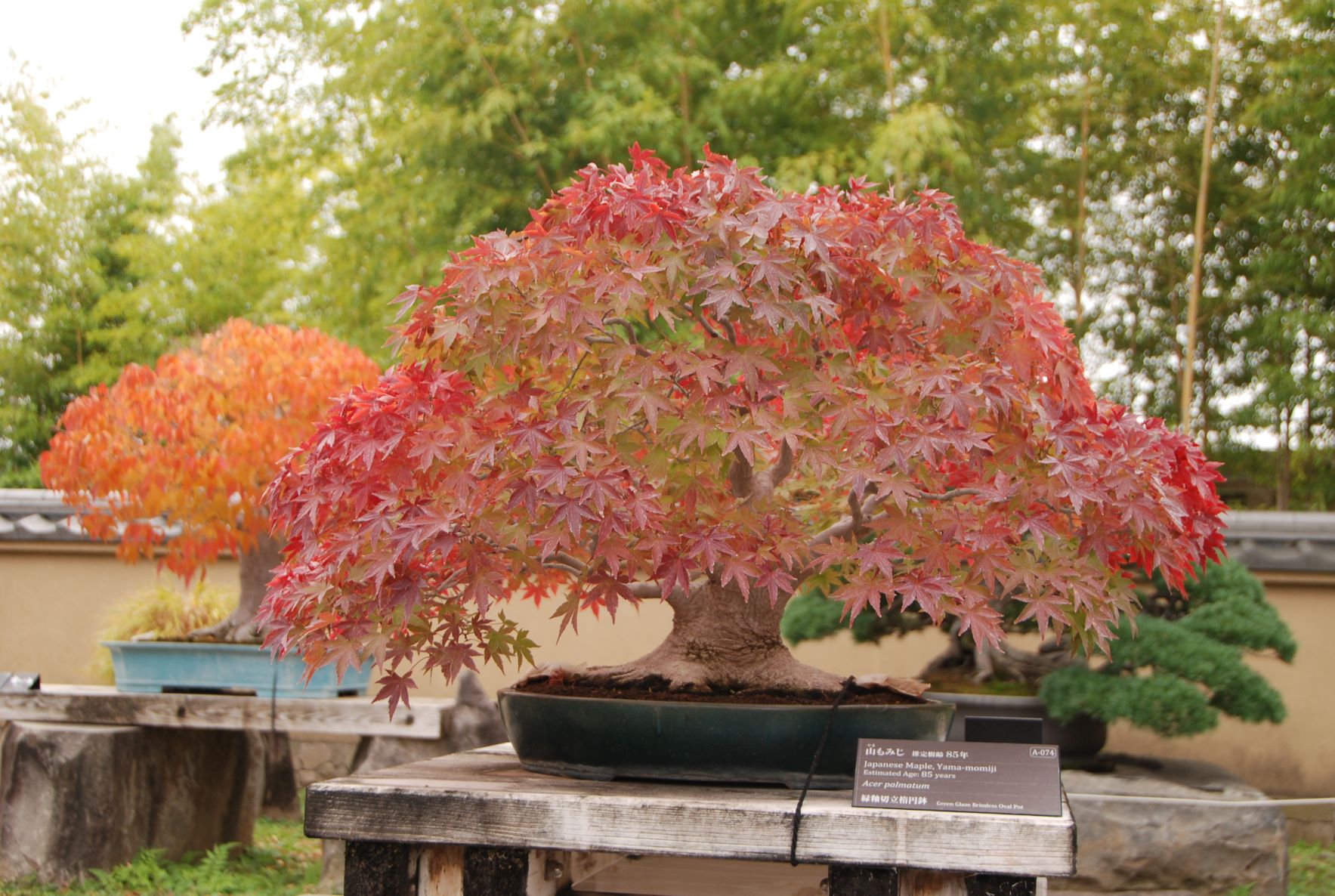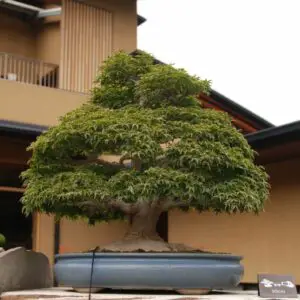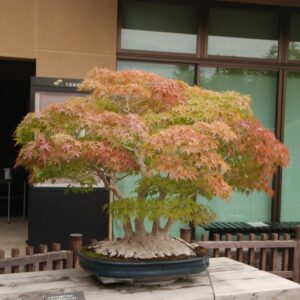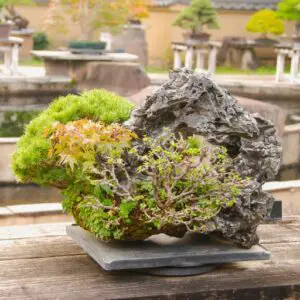There are lots of bonsai styles and some of them are good for Japanese maple bonsai and others are not so much.
The best Japanese maple bonsai styles are formal upright, informal upright, multiple trunks, and bonsai-on-rock because those are the shapes of Japanese maple trees that we usually see in nature.
How to determine bonsai tree shape
Bonsai is a natural landscape created with plants in a bonsai pot. Thus, the best way to shape a bonsai tree is to imitate the shape of the tree in nature.
Depending on the environment in which trees grow, they can grow straight up or curved and bent. Those tree shapes are the bonsai styles.
But you cannot forcibly shape the tree to your liking by wiring, pruning, or trimming the trunks and branches. Those tree shapes will be very artificial. If you cannot see nature while looking at it, you cannot call it a “bonsai”.
Remember that bonsai is an attempt to reflect in a pot the beauty of the tree that has grown in nature over many years. It is important to create a tree shape using the characteristics of the tree and expand them into an ideal style.
Best styles for Japanese maple bonsai
The most common form of a Japanese maple tree in nature is growing straight up or slightly curved. Several Japanese maple trees may grow from one place, or they may grow like a forest in a relatively narrow place.
The shape of the maple bonsai tree should reflect its natural state while using the characteristics of the bonsai tree in training.
Formal upright (Chokkan)
Shape: straight, upright, tapering trunk
Formal upright (Chokkan) is a tree shape representing a single tree standing straight up in a field. It is a tree shape that is relatively common in Japanese maples in nature. It is essential that the surface roots extend in all directions and that the trunk naturally tapers from the bottom to the top.
The overall tree shape is a triangle with the top of the tree as the vertex. By reducing the overall height and increasing the width, you can create a sense of stability and give the appearance of an old, ancient tree.
Informal upright (Moyogi)
Shape: curvy “S”-like trunk
Informal upright (Moyogi) represents the trunk and branches falling and growing in different directions due to wind and other environmental influences. Elegant curves of the trunk and branches are considered beautiful, and it is a tree shape that is common in Japanese maple bonsai.
Informal upright can be shaped from seedlings using strings and wires. But if done too much, the tree shape becomes artificial and loses its value as a bonsai. The point of creating a tree shape is to make use of the characteristics of the tree itself.
Multiple trunks (Kabudachi)
Multiple trunks style (Kabudachi) shows three or more trunks grow from a single point in the ground surface. The height and thickness of the trunks and their placement give a sense of perspective and express nature in a pot.
It is customary to use an odd number of trunks, such as 3, 5, or 7, because asymmetry makes the tree shape interesting but you do not have to worry about it so much.
Bonsai-on-rock (Ishizuke)
Shape: tree(s) growing from the crack(s) of a rock/ a tree growing on a rock with roots crawling down into the soil
Bonsai-on-rock (Ishizuke) represents trees that grow on the side of waterfalls or cliffs. The shape of the bonsai-on-rock Japanese maple tree is a copy of a maple tree growing on the rocks in a valley and is reminiscent of the beautiful scenery in the deep mountains.
The strong surface roots (Nebari) going down the rock and the vitality of the tree are expressed with stones and tree shapes.







